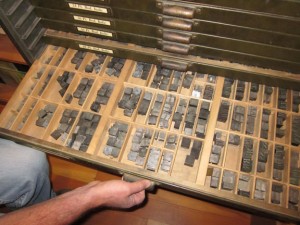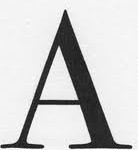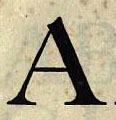Few people would consider a drive to Roswell to pick up pounds of lead a pleasure journey, but to Tom Leech and James Bourland of the Palace Press, it was all that and more.
Earlier this week, the two traveled to the site of the old Hall-Poorbaugh Printing Co., now the Copy Rite Co., to load up 24 cases of cherished Bodoni and Caslon metal type.
“We figured it was at least 1,000 pounds altogether,” Leech said, adding that they broke up the burden by moving it case by case. “It’s a dubious honor that comes with being a letterpress printer — the opportunity to move large cases of lead.”
“By the fifth case,” Bourland said, “the weight doubles. It’s true, I felt it.”
Jeanine Best, owner of Copy Rite, donated the type to the New Mexico History Museum because “I didn’t need it and, as long as someone else can use it, they should have it.”
She purchased the Hall-Poorbaugh building in 2007, along with its old linotype press and various and sundry stacks of type. (The building, at 210 N. Richardson Ave., is known to locals by the UFO mural painted on its side.) As part of the family that operates the legendary Corn ranch — “three centuries old,” she said — Best understands the power of antique furniture and old equipment to move people’s emotions.
“I’m a big history buff,” she said. “I donate a lot of stuff to museums.”
For Leech, laying hands on a cache of Bodoni that ranges in size from 10 to 72 point, including italics, meant broadening his access to one of his most preferred fonts.
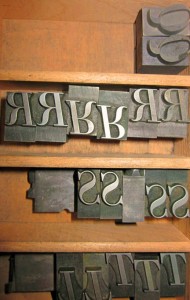 “It’s a really nice type,” he said, citing its straight serifs and balance of thick and thin lines. “It’s significant to New Mexico because when the first type arrived by the Santa Fe Trail in 1834, it was Bodoni. It was the only type used for a decade or so and got well-worn.
“It’s a really nice type,” he said, citing its straight serifs and balance of thick and thin lines. “It’s significant to New Mexico because when the first type arrived by the Santa Fe Trail in 1834, it was Bodoni. It was the only type used for a decade or so and got well-worn.
“I’ve been trying to use Bodoni in the last couple of years. A couple of books have used it, but we never really had enough to do much with it. These letters are finite. It’s not like a word processor. Over time, they become damaged, worn out, lost, misplaced, and then you don’t have that letter you need.”
Invented by Giambattista Bodoni in the late 18th century, the type is nevertheless considered an exemplar of modern types. From a Web site that font addicts will love:
Bodoni had been hired by Duke Ferdinand of Parma, a noted patron of the arts, to establish a premiere royalty press. His concern was printing of the highest quality not for the masses, but for the aristocracy. The craftsmanship of Bodoni was superb and his attention to detail was legendary. The quality of his printing was unmatched and he came to be regarded as the finest printer of his day. …
Bodoni’s desire was a type which was suitable for contemporary times rather than the age of the scribe. Instead of the stroke of the pen, his inspiration was the mathematical precision and delicate hairline strokes characteristic of copperplate engraving, which was very popular at that time.
For some lovely examples of Bodoni and an essay on how the font has evolved since Giambattista’s time, click here.
The box that Leech and Bourland collected also contained cases of Caslon type — another historic font so respected that printers since the time of Ben Franklin have said, “When in doubt, use Caslon.”
William Caslon hit his printing stride slightly before Bodoni did and in another country, England. In 1716, he opened shop in London as an engraver of gun locks and barrels, and as a bookbinder’s tool-cutter. After rubbing elbows with printers, he was inspired to open a type foundry and developed a style so legible that the leading printers of the day brought him their work.
Caslon was used on the original printing of the Declaration of Independence, and George Bernard Shaw insisted that only Caslon be used for all his books.
You can find examples of Caslon’s fonts here.
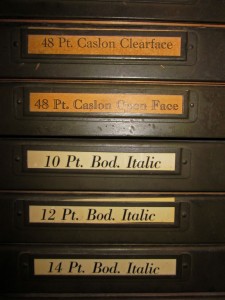 Besides collecting and displaying New Mexico’s historic printing equipment, the Palace Press is a working print shop, and Leech thinks he’ll likely dip into his new toy box for some upcoming poetry broadsides. And although it took only a day or two for the new cabinet to be engulfed in all the stuffage that comes with a print shop, he’s open to adding to the clutter with other acquisitions — should they exist.
Besides collecting and displaying New Mexico’s historic printing equipment, the Palace Press is a working print shop, and Leech thinks he’ll likely dip into his new toy box for some upcoming poetry broadsides. And although it took only a day or two for the new cabinet to be engulfed in all the stuffage that comes with a print shop, he’s open to adding to the clutter with other acquisitions — should they exist.
“A lot of this stuff just gets melted down or thrown away,” he said. “It’s not uncommon for someone to walk in and say, `I just threw some of that away, made bullets out of it, fishing weights.’
“That’s why it’s important that a museum keeps this stuff — and knows how to use it. If you don’t, it is just heavy, dusty stuff.”

